What exactly is Holy Basil? This herb, also called Tulsi, is an incredible healing herb with so many benefits, you’ll be left asking, “What can’t it do?!” Learn all about this “Queen of Herbs”—plus, find recipes and growing information.
For years now, I have hosted volunteers at my farm and every summer, we hear someone say, “what is that amazing scent?” and it is always Holy Basil. Just a simple brush past this herb releases her potent essential oils into the air, rendering humans around her in delightful awe. She is also an herb I teach about in my Medicine Woman program.
What is Holy Basil (Tulsi)?
A part of the large and beloved mint family, Tulsi is in good company along with rosemary, sage, all mints, basil and so many more. A native to the lowlands of India as well as Sri Lanka, Pakistan, Bangladesh, Myanmar, southern China, Thailand and Malasia, Tulsi or Holy Basil, has been beloved and used for centuries not only for her physical medicine but her spiritual offerings.
You can find this sacred herb growing at the entrance of temples and homes. Sacred to the Hindu god Vishnu, she is used in morning prayers to bring about good health for the individual as well as the family unit.
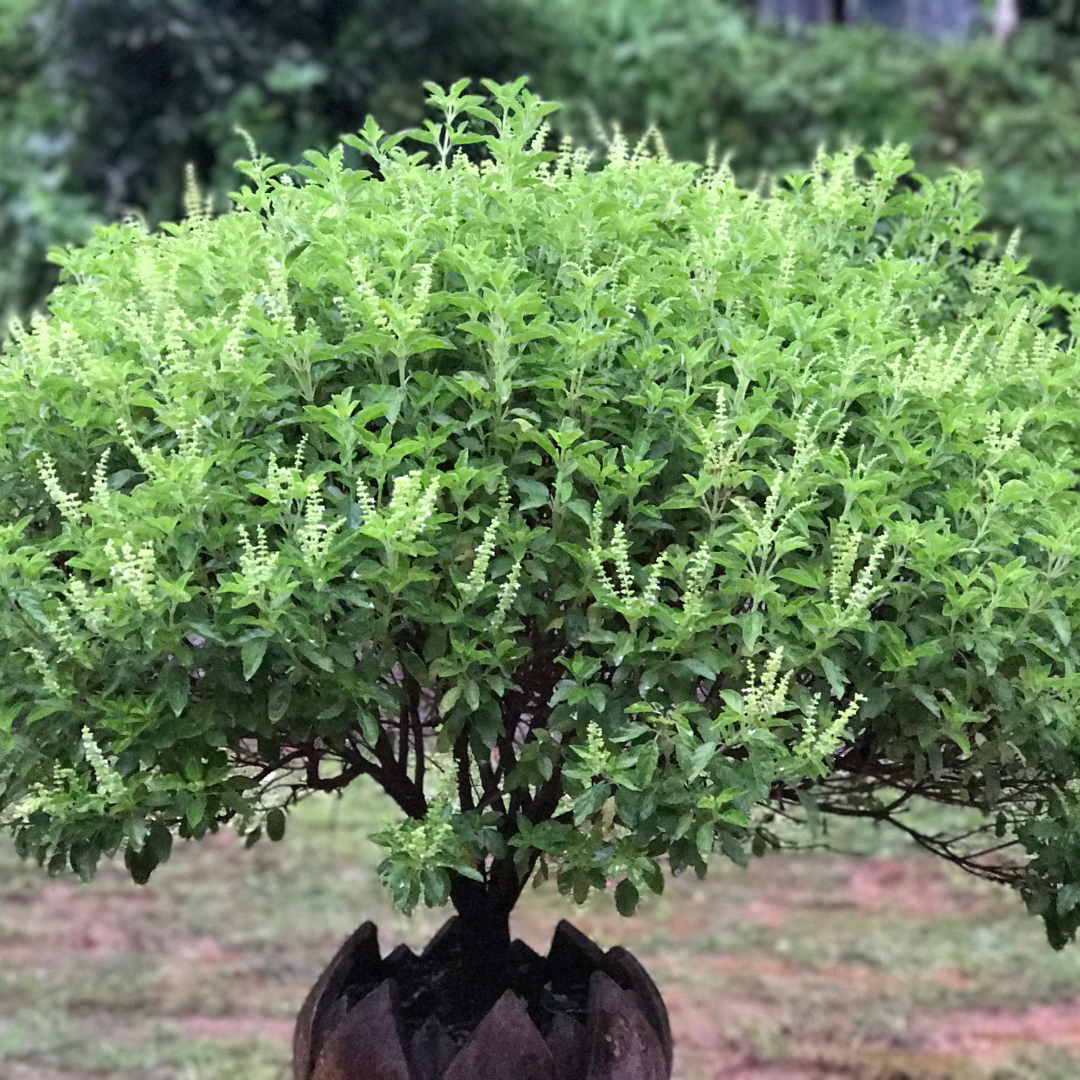
When one smells Tulsi, it is not hard to understand why she brings about such honor. We grow four different varieties of Tulsi at Wild Moon and while each has its own unique scent and flavor, all for provide a deep floral and almost sweet offering that is unmistakable. In India, she can be found growing in domestic courtyards, as she is said to help purify the atmosphere, helping to break down chemicals and dispel disease carrying viruses and bacteria.
Holy Basil Benefits
Along with her spiritual connections, Tulsi has been used for centuries as a powerful medicinal herb. Tulsi also holds the auspicious title of being an adaptogen, meaning she can help the body adjust to environmental stressors in the body.
Nervous System
A powerful support for the nervous system, Tulsi:
- Offers an uplifting and strengthening energy to the body
- Support someone experiencing exhaustion or adrenal fatigue, as she helps to reduce our fight or flight response
- Helps to support mental capacity and clear brain fog, with a special affinity for menopausal brain fog.
- Helps reduce anxiety, mild depression, and insomnia
- Helps increase one’s resilience to stress
Digestive System
- Tulsi is also a carminative, helping with gas, nausea and intestinal bloating.
- The tea can be taken to help relieve intestinal viruses and to relieve diarrhea.
- According to Herbalist David Winston, Tulsi can be combined with Licorice, Goldenseal, Turmeric, Calendula or Plantain leaf to help treat ulcers
- Having antiviral properties, Tulsi can also be used as an immune tonic to overall support the immune system
One of my favorite ways to use Tulsi is to dry her leaves to make tea throughout the year. This Summer so many of our students at Wild Moon raved about our simple herbal infused water. This infused water is so simple, refreshing and absolutely delicious. Some of the students said they couldn’t stop thinking about it!
Holy Basil & Mountain Mint Infused Water
Ingredients
- One small handful of fresh Tulsi
- One small handful of Mountain Mint
- Half of a fresh lemon, chopped
Add all ingredients to your favorite pitcher with a bit of water and crush/mix with a spoon. Fill with water and refrigerate for a medicinal delicious water.
For a wintertime tea that supports the immune system and the emotional body, I love this blend:
Tulsi Rose & Ginger Tea Recipe
Ingredients
- Two tablespoons dried crushed Tulsi leaves
- Two tablespoons dried crushed rose petals
- One tablespoon sliced fresh ginger
I like to use a glass teapot with a built-in strainer, as I always make loose leaf teas. Tea bags simply aren’t as potent as bulk or fresh herbs. I love being able to add as much of the herb as I like to create unique blends. And when we are using herbs as medicine, tea bags aren’t offering medicinal doses. I digress.
Add your herbs to your tea pot and pour over your hot water (160 to 175° F). Steep for 5 to 10 minutes and then enjoy.
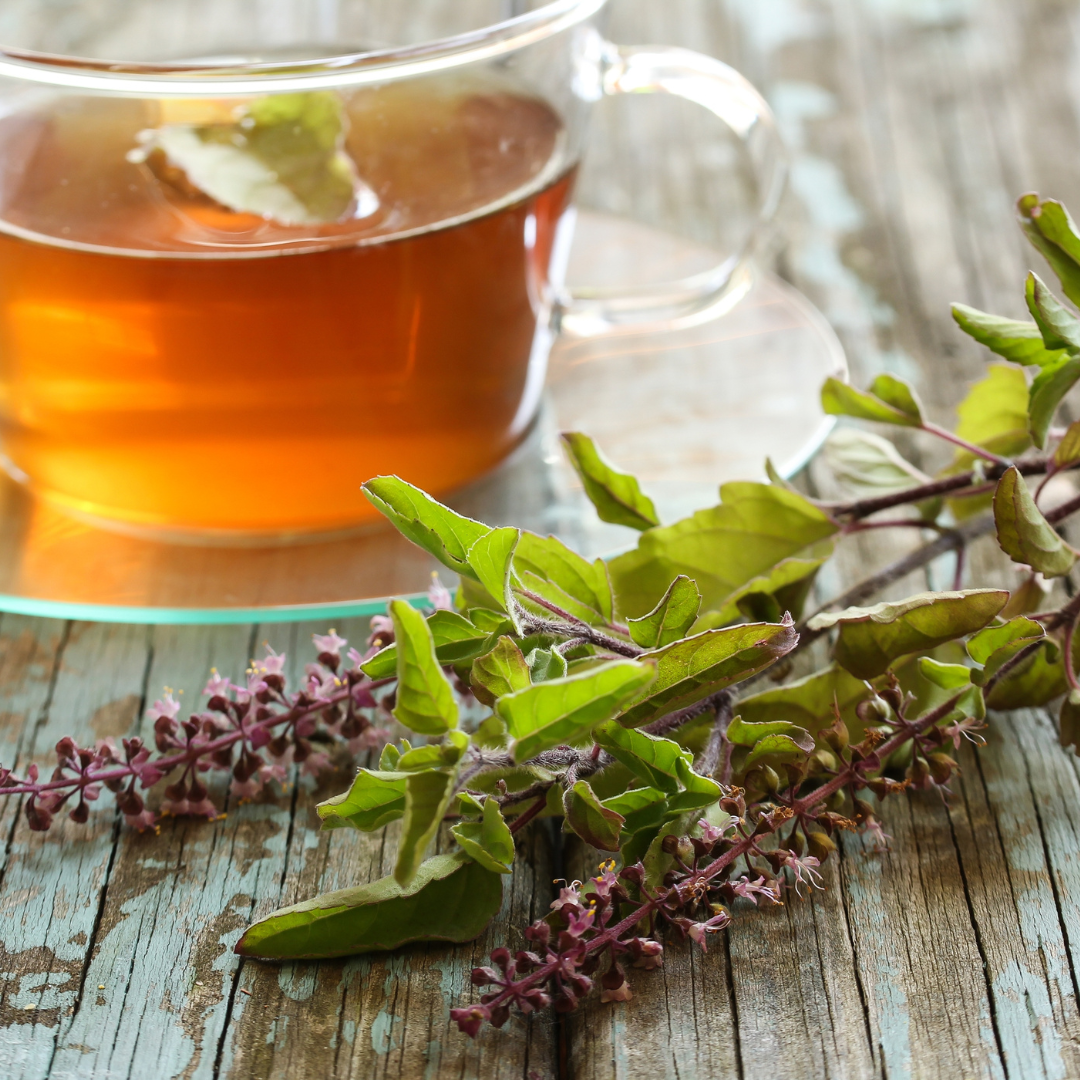
A few other ways I love to enjoy Tulsi outside of tea is by making an oxymel (apple cider vinegar and honey infused with the herb), as well as tincture and oil (both of which we make and sell at Wild Moon). I also love infusing apple cider vinegar and goldenrod in the Fall to add to my baths in the Winter.
Growing Tulsi
I recommend Tusli as one of the six healing herbs if you are starting a medicine garden.
The most common variety of Tulsi sold and grown in the United States is the Africanum variety, also known as the temperate Tulsi. Being a plant that loves to grow in a hot climate, this variety of Tulsi does well in our more temperate areas. However, this variety, though very potent in scent and flavor, is the least medicinal.
We also grow Krishna (Ocimum tenuiflorum), Rama (Ocimum tenuiflorum) and Vana (Ocimum gratissiumu) at Wild Moon. These varieties are said to be harder to grow in temperate zones, but being in zone 6a, we successfully grew all 4 varieties, and they thrive when they have good quality soul and plenty of soil amendments such as horse and chicken manure mixed into the soil before transplanting.
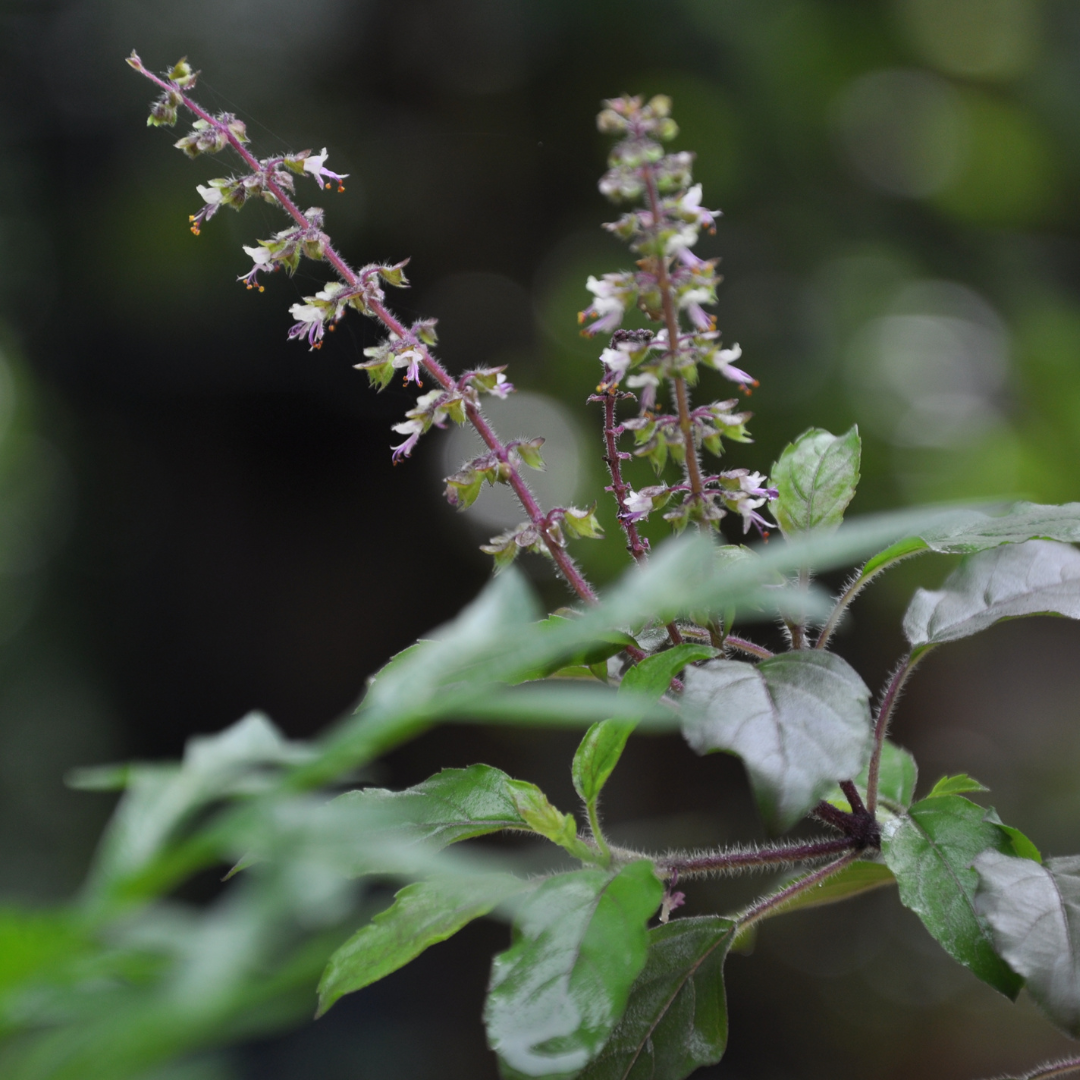
All varieties can be started indoors in the late winter to early spring and then transplanted after last frost. All varieties prefer full sun. Strictly Medicinal offers high quality Tulsi seeds. They remind you that Tulsi seeds are light germinated and benefit from being held up to the sun for a few minutes before planting.
Tulsi is an annual in more temperate climates. If you live in a cooler climate, you can try growing her in a pot and bringing her in for the winter if you have a sunny south facing home for her. If not, you can simply save her seeds and re-plant each year, which is what I like to do.
Harvesting Tulsi
I like to harvest Tulsi both before and during the flowering stage. Tulsi will provide 2 to 3 harvests before it’s time to let her fully flower and then seed. Tulsi is an incredible pollinator food. She is always full of bees and butterflies from the time she flowers to the end of the season. For that reason, I like to grow more than I need for medicine, simply to share her with our winged garden friends.
To dry, I will either hang a small bunch upside down or I will lay her out on a drying rack to air dry. You can also dehydrate at a very low temperature (only in an actual dehydrator, not an oven). When drying herbs, you want to ensure they are not in direct sunlight and have plenty of airflow. Bag or jar up your dried leaves and flowers to use all year long.
Learn more about drying herbs for tea.
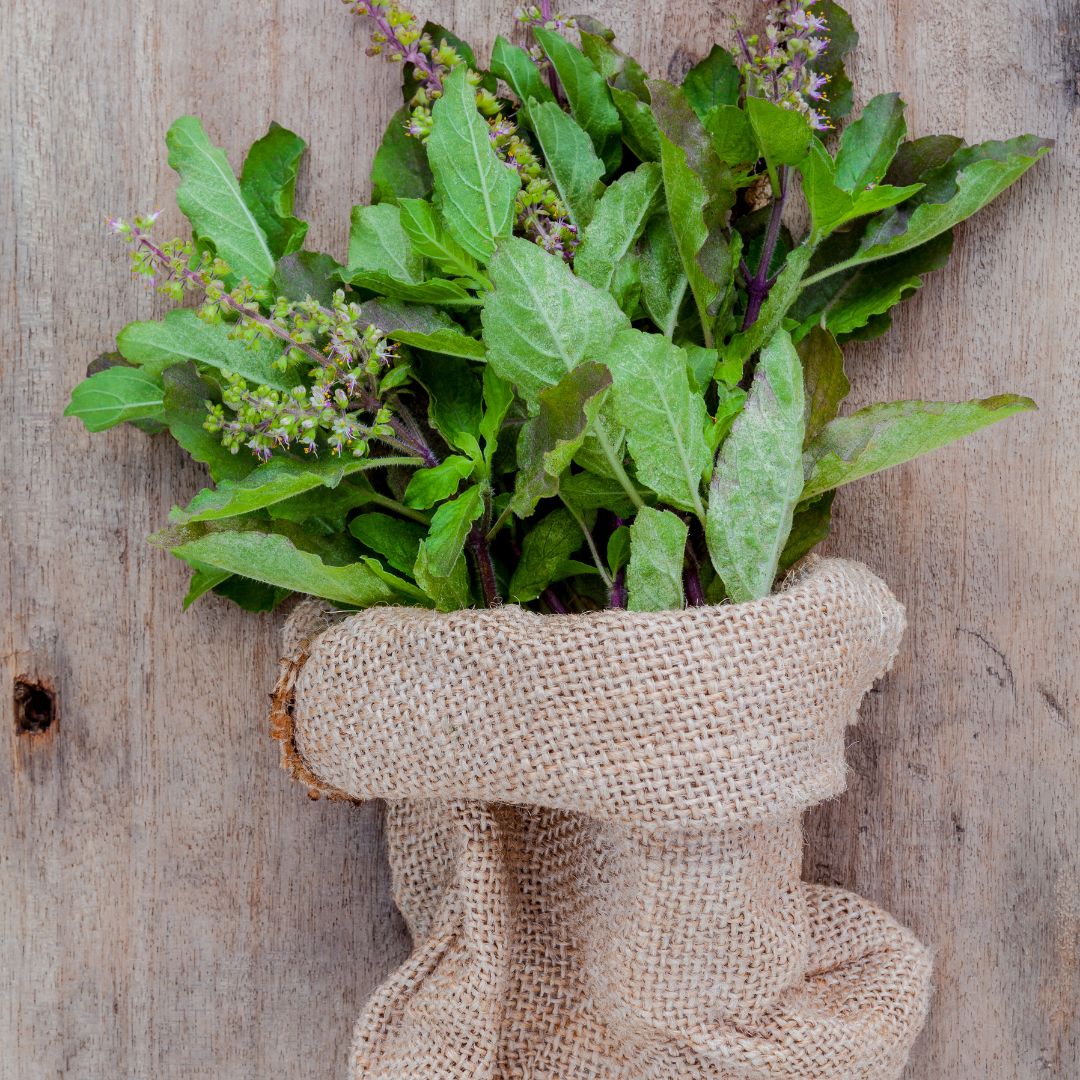
I have found that it’s very easy to save your seeds from your Tulsi plants simply by allowing the seed pods to dry and brown before cutting the flowering tops from the plant in the Fall. Shake into a bowl or bag and you have your tiny black seeds. Isn’t it amazing how our plant friends ensure abundance?
The act of saving seeds is something I have taught my students for years. It connects us deeper to the plants we grow and ensures we always have the food and medicine we need no matter what is happening with supply chains.
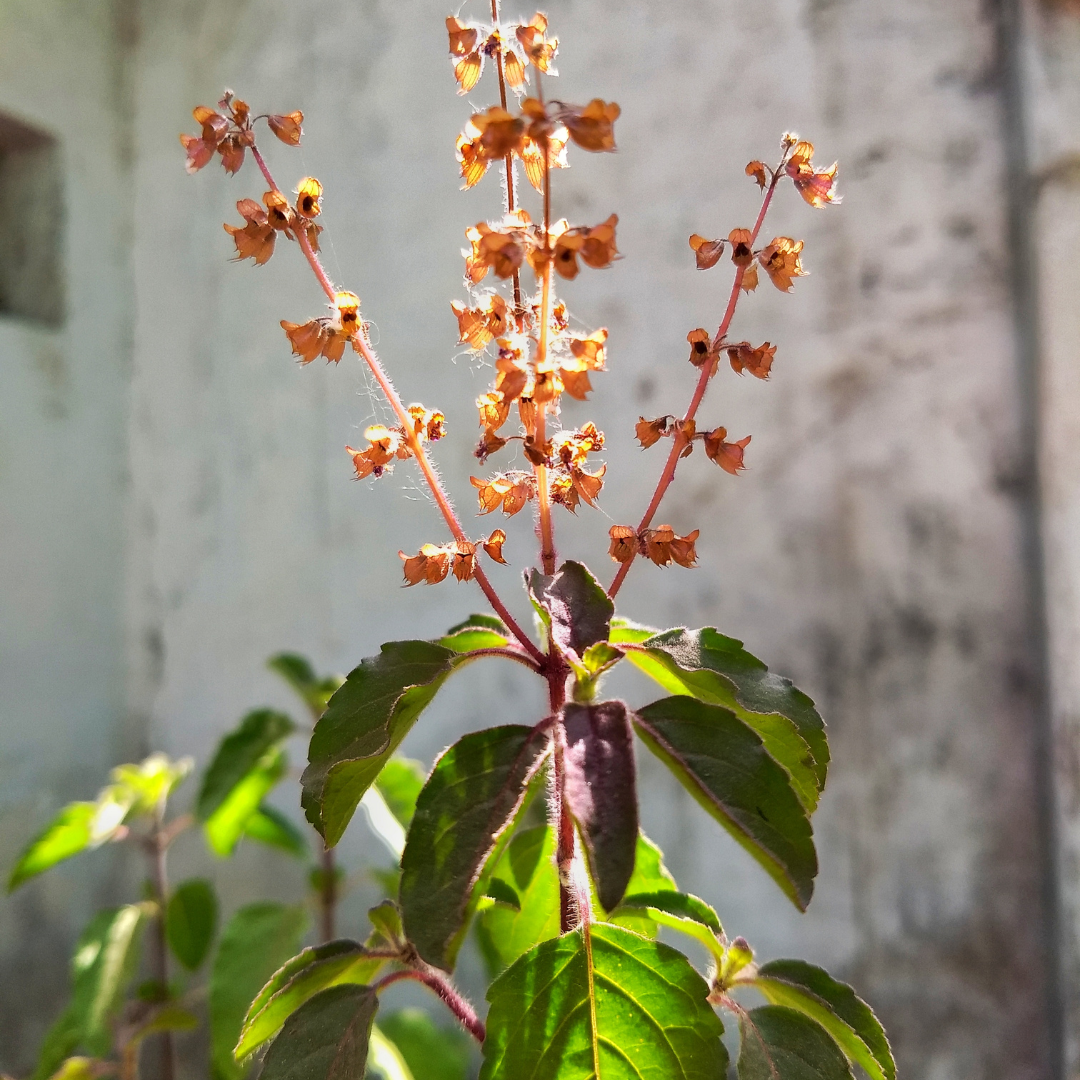
I have a feeling that once you grow Tulsi for the first time, you will make a permanent place for her in your garden. She is a valuable medicine and garden ally for certain.
Cautions
In animal studies, it had an infertility effect so use during pregnancy is not recommended just in case.
As with any herb or supplement that is new to you, use your discretion. It is possible to be allergic to any herb or food so pay attention to how you feel after taking any new herb, including Tulsi. I am not a doctor and nothing in this article is medical advice.














